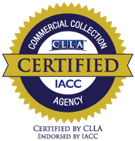
Calculating your business' accounts receivable turnover is one of the most telling year-end accounting best practices. This ratio will offer a huge clue about your business successes and near-misses in extending business credit and collecting on what's owed. The value of this number will help determine weaknesses in your accounts receivable processes so improvements can be made.
Read on to learn more about A/R turnover, how to calculate the ratio, and what procedures can help increase accounts receivable turnover ratio.
What Is Accounts Receivable Turnover?
A/R turnover effectively reports on the number of times your business' accounts receivable is "turned over", "cleaned up", or collected. The ratio may reveal an indication of the credit-worthiness of the clients to whom you're extending credit. If you're offering credit to clients who aren't paying on time, the accounts receivable turnover may be lower than if your credit clients are upholding their contracts. The A/R ratio may also highlight collections challenges within your accounting practices. The ratio is a good gauge within your business to know when there may be future cash flow troubles because your clients aren't paying on time or you're not collecting within a reasonable amount of time.
Calculate Accounts Receivable Turnover Ratio
A/R turnover ratio is determined by your credit sales divided by your accounts receivable. The net credit sales figure (this excludes cash payments) is located on your income statement. The accounts receivable number is on your company balance sheet.
Accounts Receivable Turnover Ratio = Net Credit Sales/Accounts Receivable
Once you calculate this number, you can also determine the average number of days that it takes to collect on credit sales. For example, use 365 days to determine the average over a year. This number, 365 divided by your A/R ratio, estimates your average days sales outstanding (DSO) or average collection period. Depending on the amount of working capital your business needs, this number will inform you if your collections policy or credit policies need to be more aggressive.
Increase Accounts Receivable Turnover Ratio
As we've established, the A/R turnover ratio is a good indicator of the success or weaknesses in your company's credit and collections policies. As the accounts receivable balance decreases and sales stays the same, relatively, the A/R turnover ratio increases and may reveal the credit and collections policies are working. You're continuing to sell but your client payments aren't delayed. If the accounts receivable balance is increasing relative to sales, there could be some problems in collecting those invoices. What are the problems?
Are you extending credit to clients who have consistent payment problems? If so, you may need to reevaluate your credit policies or establish a policy that stops short of extending credit to those with poor payment histories.
Are invoices being sent regularly? Have you established invoicing procedures that include when you'll invoice, when you'll follow up, and when the unpaid accounts are sent to collections?
Does your credit or payment policy work with your business? Do you need payments within 15 days but you're requesting net 30 on your invoices or contracts?
Are your client's aware of consequences of not paying on time? Have you established a documented collections policy in your client agreements?
The A/R ratio is a good benchmark to track, especially as a predictor of future cash flow challenges. Collections of accounts receivable must be consistent, friendly, and firm to obtain what's owed to your business. Also remember that even the best collections procedures can be hindered by poor credit policies.
Want help increasing your A/R turnover ratio?
Consider Accounts Receivable Clean Up. Less costly than collections, A/R clean up can help collect on past due invoices as well as help troubleshoot what's not working.
Contact us to learn more.





